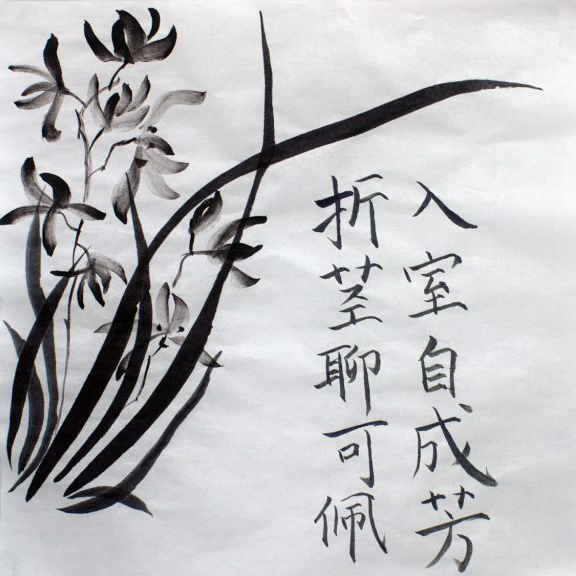
Chinese calligraphy has been a popular art form for centuries, particularly
during the Spring Festival, or Lunar New Year. It is said that writing
calligraphy at the beginning of the year brings good luck and peace and
sets the tone for the entire year to come. Now, thanks to MXenes, a family
of two-dimensional materials discovered at Drexel University, that
tradition is ready for a major evolution in the modern age.
Calligraphy ink is often made from a combination of pigments and binding
agents, including lampblack, glue, and water, that are designed to dry
quickly and easy to manipulate. Binders and glues are used for calligraphy
ink because they help the ink to adhere to the paper and prevent bleeding
and fuzzy edges, making the ink manageable to be shaped into beautiful
letters and designs. But as ink is diluted to create lighter shades,
bleeding remains a problem. By creating inks using MXenes, though, a
non-bleed ink can be created.
MXenes are an emerging class of 2D materials, also known as transition
metal carbides and nitrides. They have been shown to offer many potential
applications in electronics, energy storage, and other areas thanks to
their unique combinations of properties, especially high-electrical
conductivity and solution processability that exceed that of the famous 2D
material, graphene.
 MXene solutions and their dry films show a variety of plasmonic colors, depending on the composition and structure of MXenes. The color can be controlled by controlling the arrangement of atoms in MXene.
MXene solutions and their dry films show a variety of plasmonic colors, depending on the composition and structure of MXenes. The color can be controlled by controlling the arrangement of atoms in MXene.
Researchers from the A.J. Drexel Nanomaterials Institute demonstrate MXenes
as an ideal material for calligraphy ink. The hydrophilic (water-loving)
surface readily allows dispersity in many solvents, including water, and
good adhesion to hydrophilic substrates, such as paper; all binder-free and
bleed-free. This means that MXene ink, regardless of the concentration,
paper type, or pressure, always delivers the characters and designs
intended with clear, sharp edges. So far, more than 50 related compositions
of MXenes have been created, offering amazing diversity of properties and
colors, forming a family of bleed-free, electrically conductive, colored
inks for calligraphy, water-based painting, and more.
The long list of interesting characteristics provided by MXenes offers
other enhanced qualities to the ink. MXene ink has been shown to provide
5G-level bandwidth when
used as an antenna
and can block electromagnetic interference and
radio waves on demand
. Combined with their biocompatibility, low toxicity, and excellent
mechanical durability, MXenes have been explored as an ideal material for a
wide array of applications. Beyond inks and paints, research into OLEDs,
solar cell, thin-film transistors, biosensors, and brain neural activity
recording have also been studied.
When it comes to art, MXene’s potential alone is exciting. An artist could
light up a room, literally, through their brushstrokes. With so many
advantages and features not available through traditional inks, MXenes are
set to become the premium ink choice not only for calligraphers to create
stunning works of art that may last centuries, but for all artists who work
in the paint medium, as well as for scientists, engineers, and designers
creating next-generation electronic products and clothing. One can write
electrical circuits or create electronic tattoos with MXene inks, which can
be used in the quickly developing field of flexible, printable, and
wearable electronics for healthcare and many other applications.
Read more about this discovery and download the paper at the Drexel Nanomaterials website.